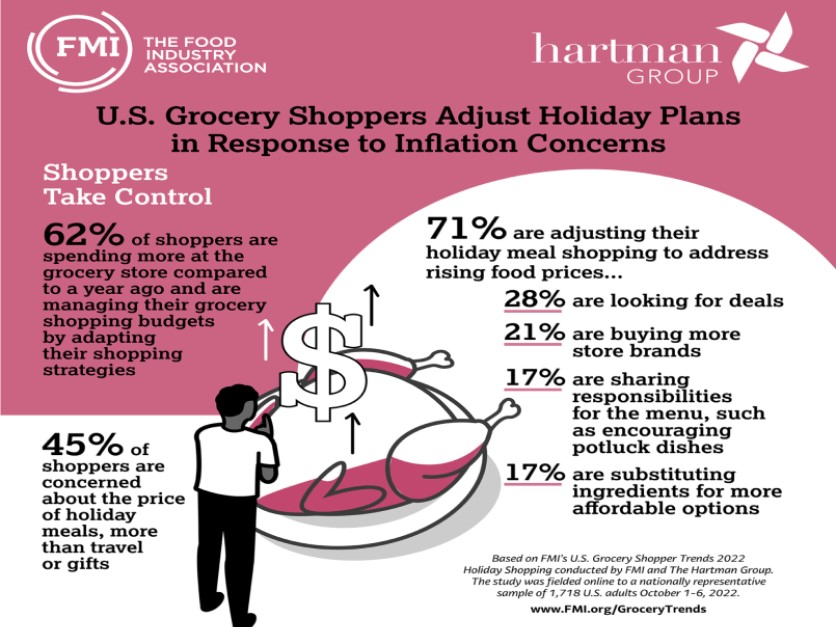Home Shopping Tips During Inflation takes center stage as consumers navigate the challenging landscape of rising prices. In these unpredictable economic times, it’s crucial to adopt smart shopping strategies that not only help in stretching your budget but also ensure you get the best value for your money. This guide delves into practical tips and considerations that can aid you in making informed purchasing decisions while managing the impact of inflation on your daily expenses.
From prioritizing essential purchases to exploring budget-friendly alternatives, these insights aim to equip shoppers with the knowledge needed to thrive financially without sacrificing quality. Understanding the nuances of pricing, timing, and smart resource allocation can lead to more strategic shopping habits that benefit your wallet.
In today’s digital age, the way we communicate has transformed significantly, affecting everything from our personal relationships to our professional interactions. The rise of technology has brought about remarkable changes, allowing for instant connectivity and access to information. However, this shift has also created a landscape where effective communication is more crucial than ever. In this article, we’ll explore the various dimensions of communication in the modern world, examining its evolution, current trends, and the essential skills required to navigate this new terrain.To begin with, let’s take a moment to understand what communication truly means.

At its core, communication is the process of exchanging information, thoughts, or feelings between individuals. Traditionally, this was accomplished through face-to-face conversations, written letters, or phone calls. Fast forward to the present day, and we find ourselves with an array of platforms and mediums, including email, social media, video conferencing, and instant messaging, all of which have revolutionized the way we connect.One of the most significant shifts in communication has been the increasing reliance on digital platforms.
Social media, in particular, has become a dominant force in shaping how we interact. Platforms like Facebook, Twitter, Instagram, and LinkedIn enable users to share their lives, ideas, and professional achievements with an audience that spans the globe. However, while these platforms offer unparalleled connectivity, they also come with their own set of challenges. For instance, the nuances of face-to-face communication, such as tone and body language, can often be lost in digital exchanges, leading to misunderstandings or misinterpretations.Moreover, the rise of digital communication has introduced a new vocabulary and set of norms.
Acronyms like “LOL” and “BRB” have become commonplace, along with the use of emojis and GIFs to convey emotions and reactions. While this lexicon can enhance expressiveness, it can also create barriers between different generations and demographics, highlighting the need for adaptability in our communication styles.In a professional context, effective communication is paramount. The workplace has evolved to embrace remote work and virtual teams, making it essential for professionals to master digital communication tools.
Video conferencing software such as Zoom and Microsoft Teams has replaced traditional in-person meetings, making it vital for individuals to develop skills in presenting themselves clearly and confidently in a virtual environment. This includes not only verbal communication but also the ability to read non-verbal cues through a screen, which requires heightened awareness and adaptability.Another critical aspect of modern communication is the concept of emotional intelligence.
The ability to understand and manage one’s own emotions, as well as empathize with others, is increasingly recognized as a key component of effective communication. In a world where interactions can often feel impersonal, cultivating emotional intelligence allows individuals to forge deeper connections and navigate challenging conversations with empathy and understanding.In addition to emotional intelligence, active listening has emerged as a fundamental skill in effective communication.
In an age characterized by distractions—whether from notifications on our devices or the sheer busyness of modern life—being an active listener is more important than ever. This involves fully engaging with the speaker, asking clarifying questions, and providing feedback that demonstrates understanding. Active listening not only enhances interpersonal relationships but also fosters collaboration and innovation in team settings.Now, let’s consider the influence of globalization on communication.
As our world becomes more interconnected, the need for cross-cultural communication skills has never been greater. Navigating conversations with individuals from diverse backgrounds requires an understanding of cultural norms, values, and communication styles. Misunderstandings can arise from differences in directness, formality, or even the use of humor. Therefore, developing cultural competency is essential for anyone looking to succeed in a globalized workplace.Digital communication has also paved the way for new forms of expression and creativity.
The rise of content creation—through blogs, vlogs, podcasts, and social media posts—has empowered individuals to share their voices and stories with larger audiences. This democratization of communication has given rise to influencers, who can sway public opinion and shape trends with their platforms. However, with this power comes responsibility. The spread of misinformation and the potential for harmful content also pose significant challenges in the digital landscape, necessitating a critical approach to both consumption and creation.As we navigate the complexities of modern communication, it’s important to embrace an attitude of lifelong learning.
The landscape is continually evolving, with new technologies and trends emerging on a regular basis. Staying informed about best practices and adapting to changes in communication styles will position individuals for success in both their personal and professional lives.In summary, effective communication in today’s world is multifaceted and requires a diverse skill set. From mastering digital tools to fostering emotional intelligence, active listening, and cultural competency, the ability to connect with others has never been more important.
As we continue to adapt to a rapidly changing landscape, let us remember the value of clear, respectful, and empathetic communication. By doing so, we can build stronger relationships, collaborate more effectively, and contribute to a more connected and understanding society. In conclusion, while the mediums of communication may change, the fundamental principles of connecting with others remain the same.
As we move forward, let’s embrace the opportunities that technology offers while remaining mindful of the impact our words and actions can have on others. With a commitment to continual improvement and an openness to learning, we can navigate the complexities of modern communication with confidence and grace.






